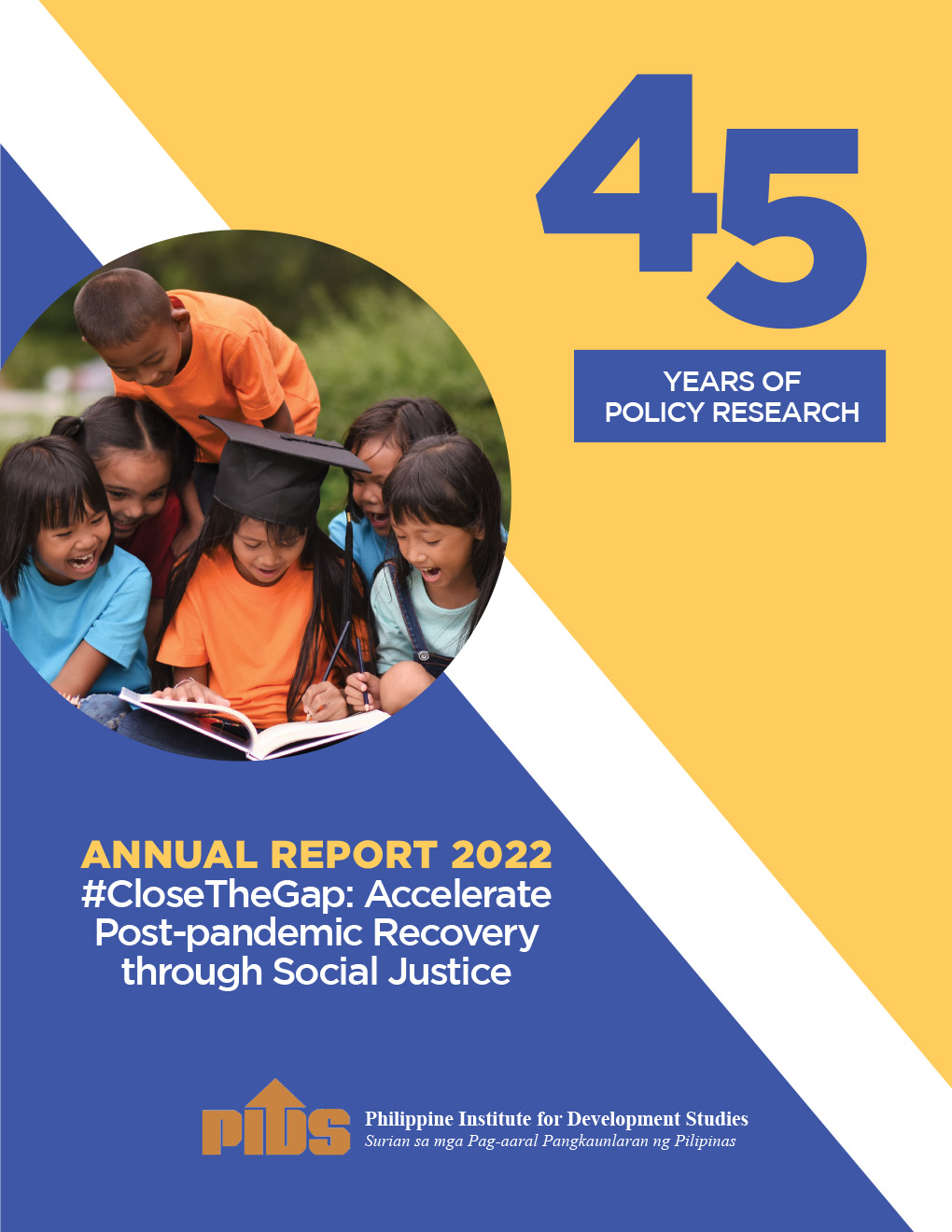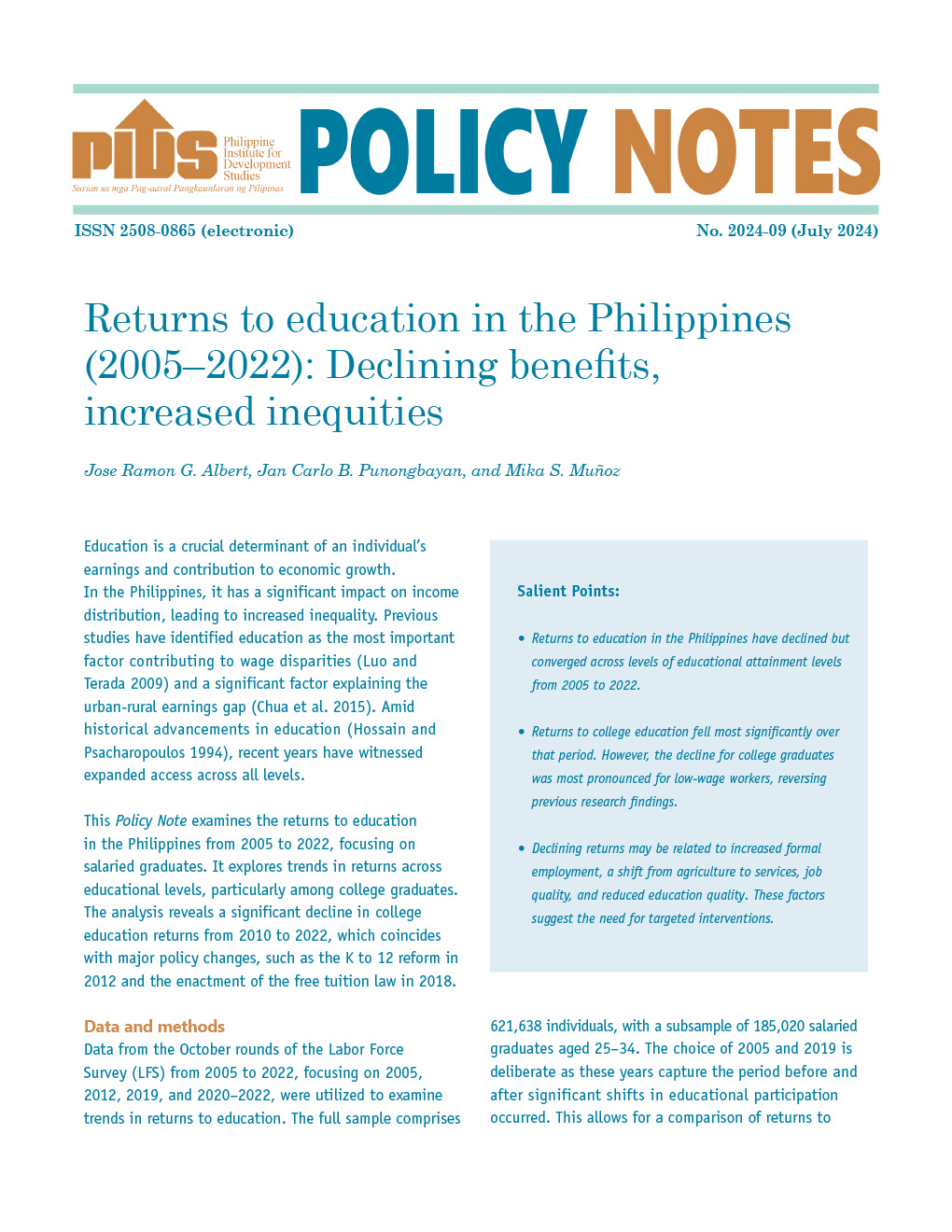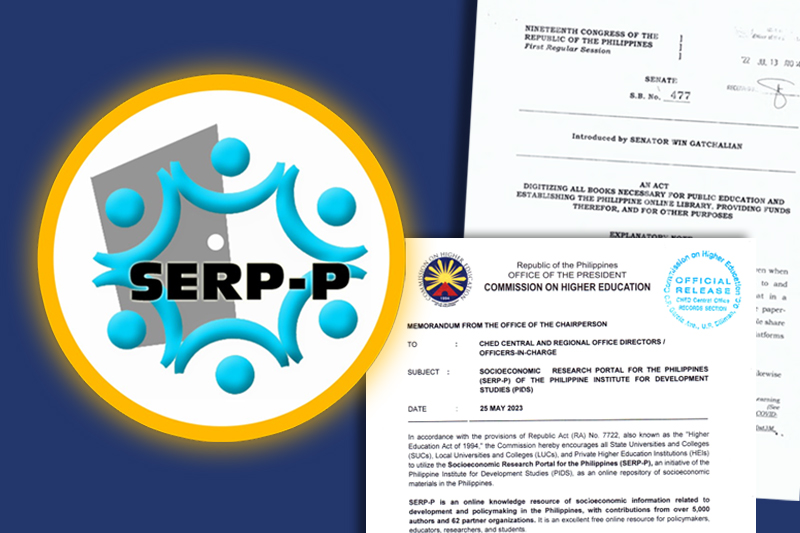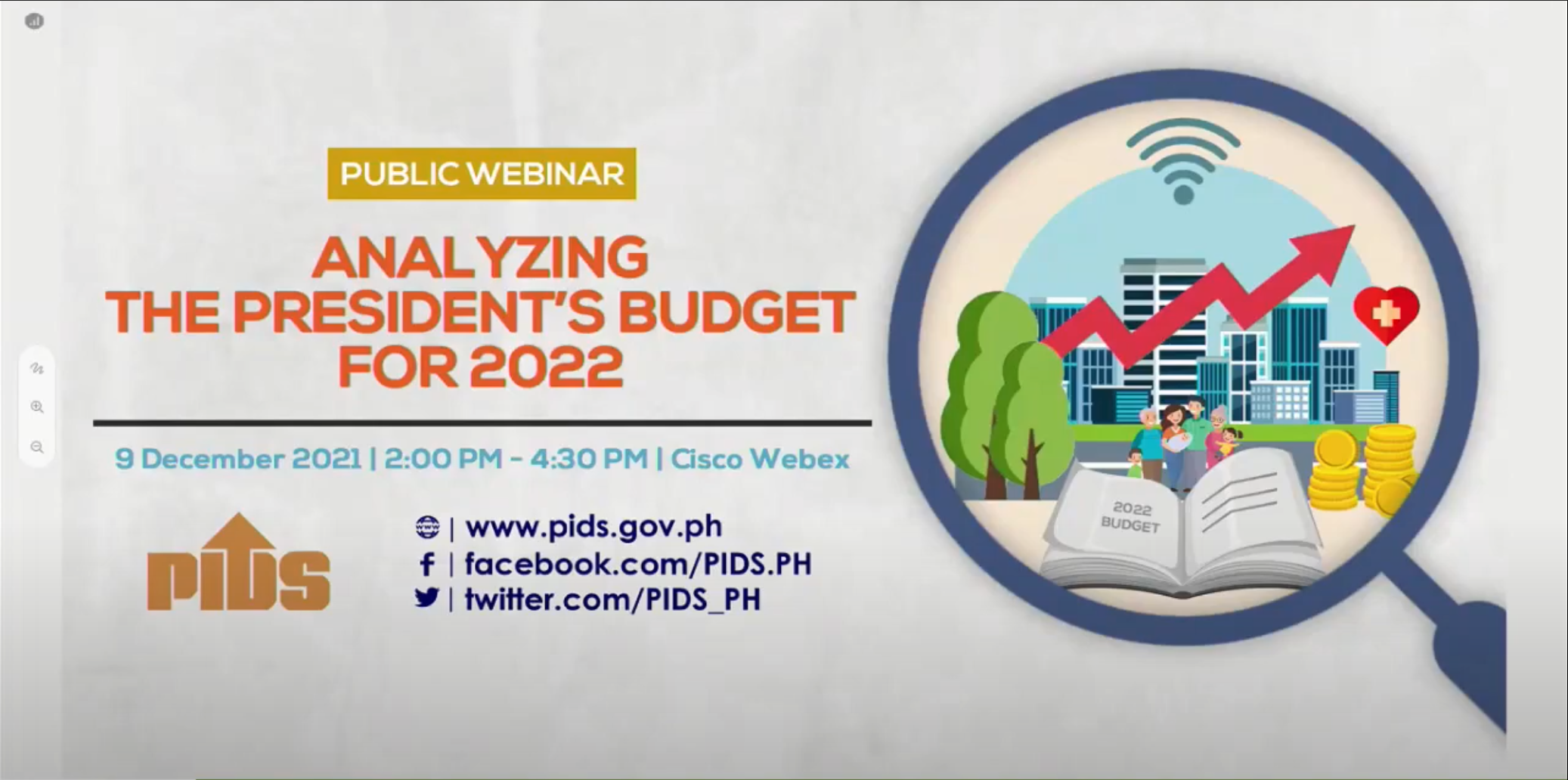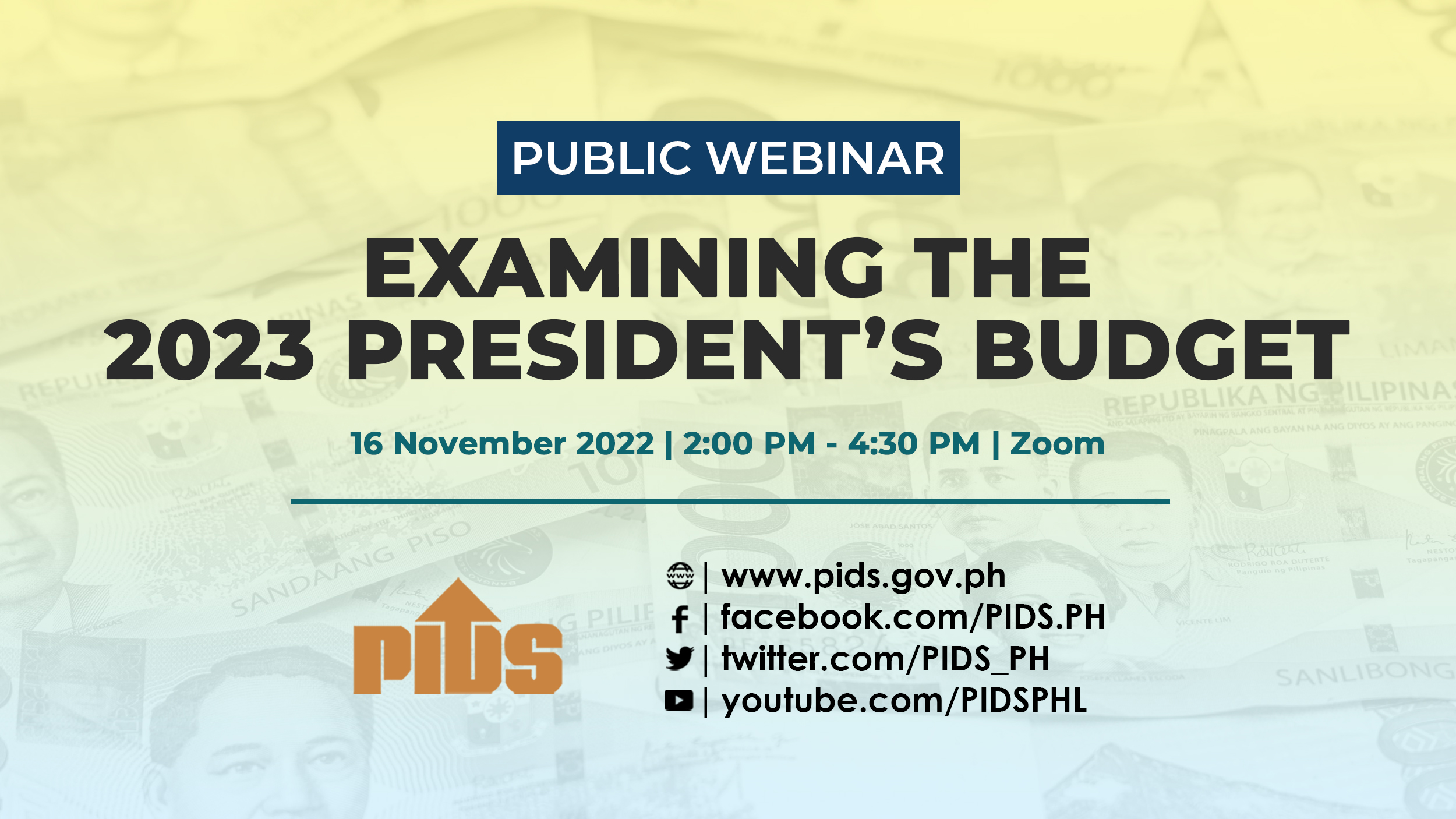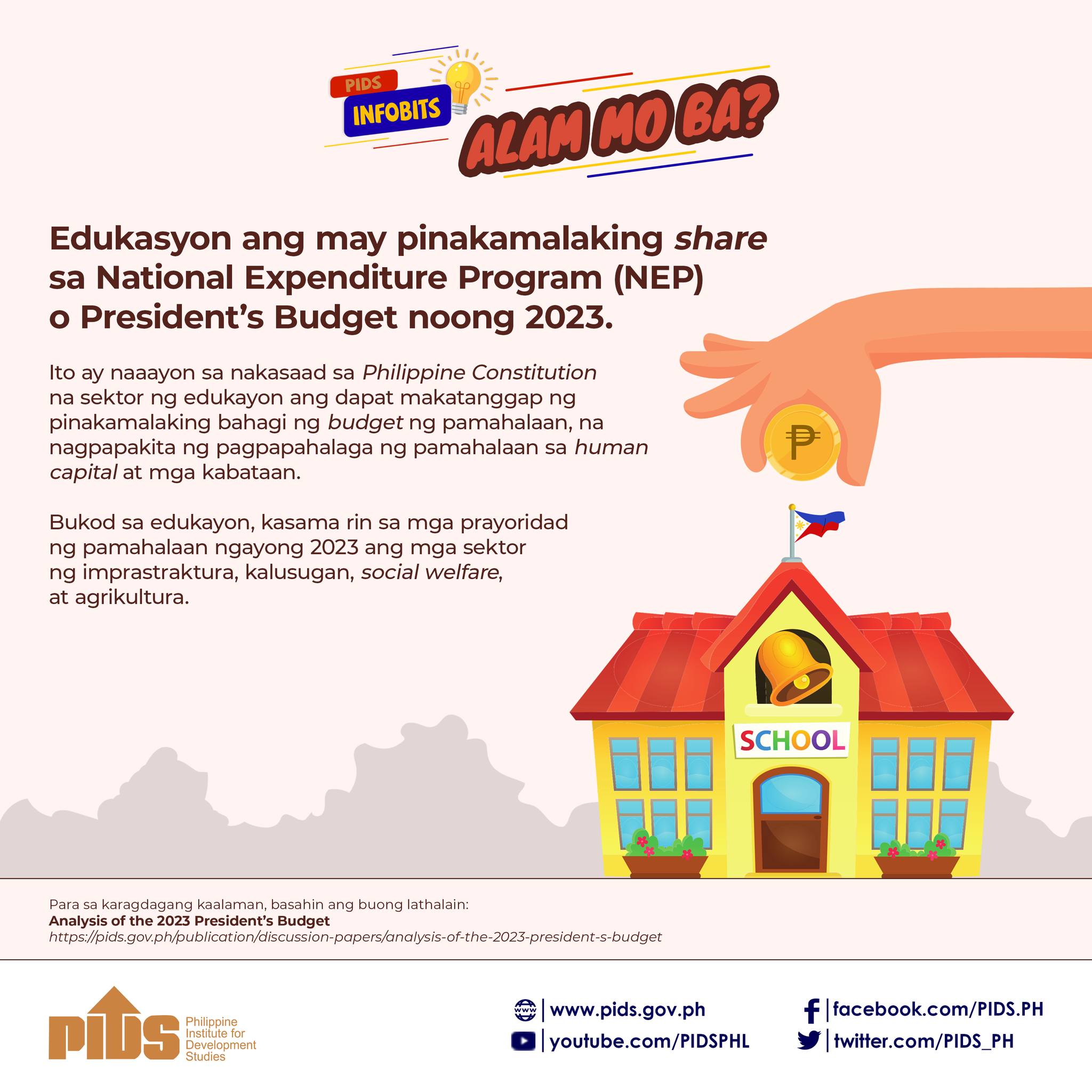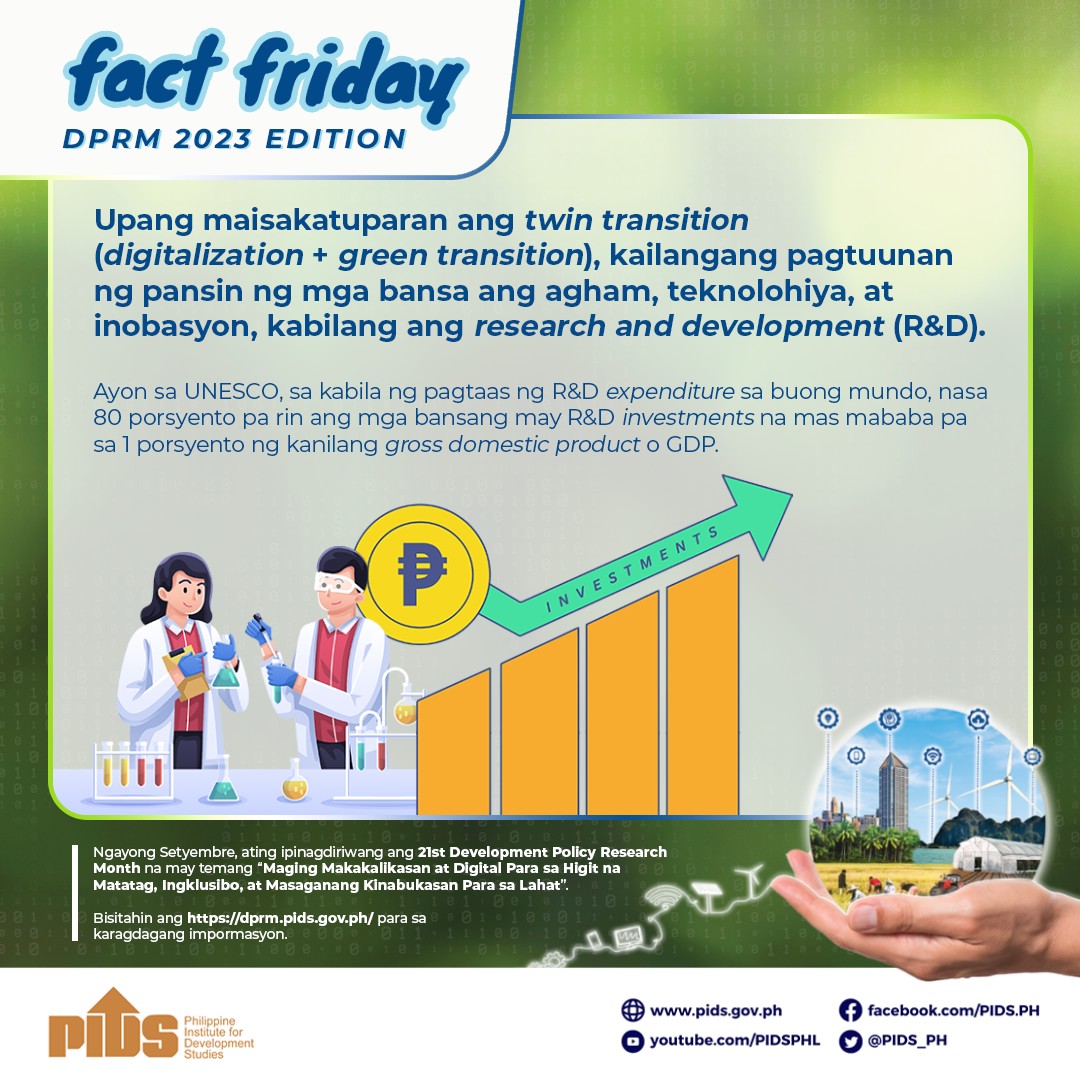*Presentation of Sen Pia Cayetano
Mr. President, I rise today to co-sponsor the 2022 budget as the Senior Vice Chairperson of the Committee on Finance in charge of the budgets of the (a) Department of Health and its attached agencies and corporations; (b) Department of Education and its attached agencies; (c) Commission on Higher Education; (d) State Universities and Colleges; (e) Cultural Agencies; and (f) the Development Academy of the Philippines.
In the Subcommittee report that this representation submitted, we sought to future-proof and use strategic foresight, not only in our battle against COVID-19 and learning to live with the virus, but to also uphold intergenerational equity and being prepared for whatever challenges lie ahead, because in truth we live in a VUCA world: Volatile Uncertain, Complex, and Ambiguous.
Whether it is another pandemic, climate change, migration issues, we need to put ourselves 20-30 years into the future. We must use intergenerational fairness to prepare a future our children will thank us for.
We note that the 2022 NEP budget increased by P500B from the 2021 budget. It was our desire to see a significant amount going to health, which has historically been underfunded throughout the decades.. and of course education, which we can all agree needs a lot of support.
We are of course, mindful of the other sectors also in need of funding, including the need to provide direct stimulus for individuals in need, especially the poorest of the poor, small businesses, and those who are most vulnerable.
Clearly there has been an increase in the NEP in both the health and education sectors from the 2021 budget, but that increase is minimal. For health, the increase is P30B; for education, including TESDA, it is P19.2B.
But, Mr. President and dear colleagues, there was a P500 Billion increase. Surely, we can do better than this for the health and education sectors.
Our Subcommittee submitted an additional budget of P107.32B for health. The final Committee Report submitted by our Chair, Sen. Angara, reflects an amount of P44.96B.
For education, we submitted an additional P36.6B. The final Committee Report indicated that P10.8B for education was granted. This includes TESDA.
For now, let us focus on what is contained in the budget. Let me start with health. The UN Sustainable Development Goals (SDGs) have provided health targets that need to be achieved by 2030. For brevity, I will only discuss a few of the targets:
One is achieving universal health coverage, including financial risk protection, access to quality essential health-care services and access to safe, effective, quality and affordable essential medicines and vaccines for all; Another is to support the research & development of vaccines and medicines for communicable & non-communicable diseases that primarily affect developing countries, and provide access to affordable essential medicines & vaccines; And, substantially increase health financing and the recruitment, development, training and retention of the health workforce.
We kept this in mind, Mr. President, in preparing our Subcommittee Report.
It bears emphasis that the target of government spending on health should be at least 5% of its Gross Domestic Product (GDP), as recommended by the WHO.
The Philippines' projected GDP for 2021 is P18.70T, 5% of that is P935.06B. Based on the 2022 NEP, we have allocated P242B for health, which is only 1.29% of the 2021 projected gross domestic product. While the P242B health budget in the 2022 NEP is 14.26% higher as compared to P211.98B in the 2021 GAA, this is still a far cry from the much needed funding to reach the 5% indicator.
With the enactment of Republic Act No. 11223, or the Universal Health Care Act, we intend to uphold the right of every Filipino to primary health care by financing universal health coverage to ensure that health services are available to all. Funding for this is included in our budget proposals.
On the screen is a table which shows how much we have spent on health for the past 10 years. A quick look would show that the entire DOH budget, which is supportive of universal health coverage (UHC) and primary health care, has been increasing, but not fast enough and is far from the 5% GDP indicator.
This representation is aware that the DOH budget does not solely capture the extent of our spending on health. However, even if we added LGU investments on health, the budget of medical state universities and colleges, which we have increased for the last two years under the leadership of our Chairperson, Senator Angara, and other items, this will still not significantly alter the total health investments.
COVID-19 has exposed the gaps in our healthcare system, especially the difficulty in immediately responding to this kind of pandemic. In order to provide the necessary COVID-19 response and strengthen our health system, the Subcommittee proposed additional P107.32B for DOH and its attached agencies and corporations, of which P44.96B was carried by the Finance Committee.
We have just received the detailed Budget Committee Report and are currently reviewing the line-by-line. Therefore, the following are the key proposals of the Subcommittee:
COVID-19 has emphasized the need to support our frontline workers. Creation of a new line item for COVID-19 Benefit and Compensation, which will cover both health and non-healthcare workers amounting to P51.99B. Thank you, Mr. Chair, Senator Angara, for including these benefits in the final Committee Report.
We also increased the budget for the following vital COVID-19 response:
Realignment of P4.23B from other programs, activities, and projects (P/A/Ps) of the DOH for COVID-19 vaccines, since these P/A/Ps were not possible to implement due to the pandemic. Thank you again, Sen. Angara, our Chairperson, for including this.
Additional procurement of COVID-19 testing commodities to cover the deficiency for 9.28 months amounting to P11.76B.
Next is P2.48B for 4,800 vaccinators to be deployed in different vaccination sites to fast-track the COVID-19 vaccination program.
Additional P1.99B for the Epidemiology and Surveillance, which includes the hiring of Disease Surveillance Officers (DSOs) and expansion of surveillance activities related to vaccine-preventable diseases. Thank you again, Mr. Chairman, for including this.
Additional P43.9M for the One Hospital Command Center (OHCC) for its operations and human resource. Thank you to our Chairperson. Dear colleagues, you will recall, at the height of the pandemic and different surges, you will hear numerous reports of people transporting their loved ones from one hospital to the next. And with apparently no one in charge, this is the job of the One Hospital Command Center. And we hope with the additional funding that our Chairperson has included in the budget, that this will run more smoothly.
Additional operational budget of P3.7B for DOH Hospitals in Metro Manila and P10.7B for DOH Regional Hospitals and other healthcare facilities. Dear colleagues, I would like to express the reality that these hospitals continue to serve the general health needs of all the 114 million Filipinos. We need to support their budget.
For the Research Institute for Tropical Medicine (RITM), we gave an additional budget for SARS-COV2 Whole Genome Sequencing to help detect emerging viruses that could potentially become a new pandemic (P496.26M for MOOE and P181.13M for CO). I cannot overemphasize the importance of this budget for RITM. Thank you to our dear Chairperson for including this.
We must also be strategic with our budgetary appropriations. While addressing the ill effects of COVID-19, we must also ensure that we continue to address existing diseases and future-proof our healthcare system in preparation for possible new pandemics and emerging health threats. This also includes the additional amount mentioned for RITM, which is both a COVID-19 and non-COVID-19 response. A total of P1.9B was included for the following:
Emergency Health and Preparedness Construction of warehouse hubs for the efficient distribution of medicines and other commodities
Cancer Assistance Fund to cover the cost of cancer treatment and care-related components
Continuous operation and institutionalization of the DOH Futures Thinking Office
Health Technology Assessment (HTA) to support evidence-based policy and decision-making on resource allocation decisions in the health sector
Health Promotion for Centers for Health Development (CHDs), which implements DOH programs, activities, and projects at a local level
And now let's go to education.
Article XIV, Section 5, par. 5 provides that "The State shall assign the highest budgetary priority to education and ensure that teaching will attract and retain its rightful share of the best available talents through adequate remuneration and other means of job satisfaction and fulfillment."
Despite this constitutional mandate, the Philippine Institute for Development Studies (PIDS) published a policy note last August 2021 entitled, "We need to invest more in learners, learners, learners!" stating that we are actually underinvesting in the education sector.
Directly quoting some highlights:
Spending for education has never reached 4% of the GDP.
Such spending is low relative to what several neighbors have been spending, such as Singapore (25.8% in 2018), Brunei Darussalam (4.4% in 2016), Malaysia (4.2% in 2019), Viet Nam (4.2% in 2018), and Indonesia (3.6% in 2015).
Underinvestment in education has had devastating effects on the quality of learning.
The Philippines needs to quadruple its education spending to reach the average global reading proficiency in the PISA. I am sure you are all aware of the dismal PISA reports that we have had.
So all of this, dear colleagues, needs to be taken as a wake-up call so that we invest more in education. As stated in the policy note: Education raises the quality of jobs, improves productivity, and thus, sustains and accelerates economic growth. A more educated, especially a more digitally skilled workforce, is also needed to meet the demands of the Fourth Industrial Revolution and the future of work.
Not only is this aligned with our commitment to the SDGs, investing in learners is an exercise in futures thinking, given the long-term positive effects on the workforce and the economy.
Given this, we sought to provide funding for early, basic, and higher education that hopefully reflects these priorities despite the limited fiscal space.
For Early and Basic Education: To ensure learning continuity and quality education not just during the pandemic, but in the future, the Subcommittee proposed additional P17.71B for DepEd and its attached agencies, of which P3.4B was carried by the Committee.
The Sub-Committee's key proposals include additional funding for the following as shown in the screen:
Operation of Schools in Elementary, Junior High School and Senior High School levels to cover their increased expenses in anticipation of expanded implementation of face-to-face classes in 2022
Basic Education Facilities for additional handwashing facilities for priority schools under the Priority School Health Facilities program
Disaster Preparedness and Response Program for the implementation of immediate response interventions to disaster or emergency-affected schools, learners, and personnel
Last Mile Schools Program for the creation of an estimated additional 28 Last Mile Schools in 5th and 6th class LGUs
School-Based Feeding Program (SBFP) estimated to assist an additional 1M learners, especially covering families whose incomes have dropped as a consequence of the pandemic
Government Assistance and Subsidies - Senior High School Voucher Program as well as the Education Service Contracting Program for Private Junior High Schools, wherein Sen. Gatchalian is a staunch supporter as well.
Special Education Programs
Establishment of National Child Development Centers
As discussed by Sen. Angara in his sponsorship speech, I am thankful for his support on some of these proposals, as well as his approval of our proposals on upholding the mental health of learners and personnel.
For Higher Education: To improve on our delivery of inclusive and equitable quality higher education, the Subcommittee proposed:
Additional P9.163B to the budget of CHED, of which P550M was granted by the Committee.
This would have included Additional P9.7B to the budget of SUCs, including UP, of which P6.4B was carried by the Committee.
While we are reviewing the details of the Committee Report, let me highlight some of the most consequential amendments of the Subcommittee and the rationale for these.
Effective learning environments have been specified by the United Nations as one of the three means of implementation, along with scholarships and teachers, to achieve Quality Education for All (SDG 4). Consistent with this, the Subcommittee included the following key amendments in the budget of CHED and SUCs:
P1B total Additional Funding for the Implementation of Face-to-Face Classes. I must emphasize that along with vaccination, this is crucial for a safe return to school. We thank the Chairman, Sen. Angara for including this.
P1.958B total Financial Assistance to SUCs for their Smart Campus Development Program. This is an ongoing initiative of Sen. Joel Villanueva... From the last that we recall, this was very lately delivered to the SUCs in this year's budget, which as of this moment, they are yet unable to avail of because it was just granted to them by CHED... This would really help escalate the future preparedness of our schools.
P500M under CHED for Financial Assistance to SUCs for their Smart Campus Development Program for SUCs that are still developing their programs. Because there was an initial amount for those who were previously granted, that's why I think there are two separate items for this. Next is the scholarships, which is one of the three strategic means of implementation to attain SDG 4. The Subcommittee, thus, proposed the following key amendments to the CHED budget:
Increasing the funding for Universal Access to Quality Tertiary Education (UAQTE) by P5.95B. I need to put this on record that this amount is needed to support new grantees under the Free Higher Education because CHED had recognized more local universities, otherwise known as LUCs, and new grantees under the Tertiary Education Subsidy. They were not previously included in the Listahan 2.0 of the DSWD. We note from the sponsorship of Sen. Angara that funding for this has also been included, thank you to our Chairperson.
Additional budget of P473M under provision of assistance and incentives, scholarship and grants through STUFAPs to cover all the needed funding for the budget deficit to support all ongoing scholars and an additional 4,000 new scholars. Please note, Mr. President, when I do not thank the Chairperson, that means he has yet to act upon these recommendations.
P1.387B additional subsidies for students for internet or load allowance.
Next is provisions for funding for the implementation of Doktor Para Sa Bayan Act, sponsored no less by our Senate President, Senator Villanueva, and so many of our other colleagues:
Medical Scholarship and Return Service (MSRS) which was increased by P250M to support 920 more qualified aspiring doctors. This is a law. I am so proud that our colleagues have worked together to make this happen. Imagine that, 920 more qualified scholars.
P150M Seed Fund for Development of Medical Schools in SUCs which the Subcommittee reintroduced in the budget of CHED.
The Subcommittee likewise provided a total amount of P1.45B for the increase in carrying capacity of the Colleges of Medicine of 11 SUCs and to support the operations of 5 SUCs with pending applications for medical programs. Again, thank you Sen. Angara, our Chairperson for including this.
In support of policies and other existing laws that advance outcomes under SDG 4 such as relevant skills for decent work (4.4)... and education for sustainable development and global citizenship (4.7), among others, the Subcommittee proposed granting funding for the following, which are currently flashed on the screen:
Institutionalization of Philippine Qualifications Framework (PQF) in Higher Education;
Building Internationalization Competitiveness Program for Philippine Higher Education; and
Development of programs for the improvement of the quality of English in the tertiary level
Next is funding to mainstream futures thinking in higher education and in pursuit of innovations. Thank you, Sen. Angara for also highlighting this in your budget.
In aid of our SUCs, we also proposed providing additional Capital Outlay for SUCs without CO in the NEP. During the DBCC briefing, this representation emphasized the need to annually fund education and health infrastructure consistent with our obligations as party to the UN 2030
Sustainable Development Agenda and regardless of our international commitments, our commitments to ourselves to catch-up to the growing demand for such facilities in education and healthcare.
Another item in our Subcommittee report is the P1.2B needed by the 4 BARMM SUCs in the budget.
Next is for the University of the Philippines System, the Subcommittee proposed an additional funding of P3.29B, which includes:
P90M for the Installation, Testing and Commissioning of Fire Protection System of the Central Block Building of the UP-Philippine General Hospital (PGH)... I believe I heard Sen. Angara mention this, so thank you, Sen. Angara.
300M increase for UP-PGH for the procurement of highly specialized medical equipment and P130M additional MOOE to support its operations.
P165.9M for the increase the carrying capacity of the UP Manila College of Medicine and School of Health Sciences;
Funding for the implementation of the Rare Diseases Act. Thank you also for this, Sen. Angara.
Finally, we wish to emphasize that the Subcommittee granted funding amounting to an additional P60M for Phase 2 of the Philippine Genomic Information and Resource Hub to allow further genomic studies. And I believe his honor, our Chairperson, also included this.
In support of lifelong learning, under the Development Academy of the Philippines, we proposed an additional funding of P86.5M, of which P50M was granted by the Committee on Finance. The additional funding is geared towards capacitating government officials and employees with strategic foresight and greater anticipatory capacity, building capacity through research, and supporting education and training programs. Again, thank you to our Chairperson, Sen. Angara, for supporting this intervention.
The Subcommittee also recognizes that culture is both an enabler and a driver of the economic, social and environmental dimensions of sustainable development.
For the budget of cultural agencies, the Subcommittee prioritized maintenance and conservation works; safety and security concerns, such as fire protection; and support for continuing operations. In addition, Mr. President, we should note that investments in this area will contribute greatly to our creative industries and tourism sector. This is also our way of future proofing our labor force, recognizing where our strengths lie and building upon them. Thank you again, Mr. Chairman, to our Committee on Finance head for including these interventions.
Those are the details of the sub committee report, Mr President. Again, we reiterate, the amounts mentioned are those contained in the Subcommittee Report. Some of them, we have confirmed, have been adopted in the final Committee Report, but we have not been able to confirm everything as of this sponsorship.
While we understand the limitations of the Finance Committee in terms of available fiscal space, this representation feels it is important to stress that we cannot allow another year to pass without making sufficient investments in health and education.
To conclude, this sub-committee report was crafted using the SDGs as the main blueprint and guide to help attain the different goals for a more sustainable and prosperous future.
As a party to the UN 2030 Sustainable Development Agenda, the Philippines is committed to integrate the Sustainable Development Goals into our national development plans and policies. But like I said earlier, international commitments aside, it is a commitment we make to ourselves and to the Filipino people whom we serve.
Many countries have embraced the idea of living with COVID, and have taken steps to allow people to resume their daily lives. We want the same for our children. We share Sec. Liling Briones' desire for the resumption of face-to-face classes, and hope we can add to the numbers of schools that are participating in the pilot and open it up in a safe way for our children. We recognize the efforts of CHED to vaccinate the college students and simply ask that we coordinate with the concerned LGUSs and move with a sense of urgency to allow colleges to open soonests.
We have included a budget for the safe return to classes in both DepEd and CHED. Now that NCR and many other regions are in Alert Level 2 and there is even news that we may go down to Alert Level 1, we must seize the opportunity to bring children and young adults back to school. Thank you again to our Chairperson for supporting the budget for the safe return of face-to-face classes.
Let me end with this quote from a United Nations' 2020 Policy Brief (Education During COVID-19 and Beyond):
"National authorities need to act to mitigate long-term consequences for children, despite constraints on public spending, with education interventions forming part of national COVID-19 stimulus packages alongside health, social protection and economic recovery initiatives."
I thank the Chairperson once again for his trust, Mr. President, dear colleagues, I ask for your support in passing these proposed budgets. We need a budget that allows the people to earn and our children to learn. I am certain with the wisdom of this collegial body, we can find ways to augment the budget of DOH, DepEd, CHED, SUCs, and the other agencies under this Subcommittee.
Thank you, Mr. President.
Mr. President, I rise today to co-sponsor the 2022 budget as the Senior Vice Chairperson of the Committee on Finance in charge of the budgets of the (a) Department of Health and its attached agencies and corporations; (b) Department of Education and its attached agencies; (c) Commission on Higher Education; (d) State Universities and Colleges; (e) Cultural Agencies; and (f) the Development Academy of the Philippines.
In the Subcommittee report that this representation submitted, we sought to future-proof and use strategic foresight, not only in our battle against COVID-19 and learning to live with the virus, but to also uphold intergenerational equity and being prepared for whatever challenges lie ahead, because in truth we live in a VUCA world: Volatile Uncertain, Complex, and Ambiguous.
Whether it is another pandemic, climate change, migration issues, we need to put ourselves 20-30 years into the future. We must use intergenerational fairness to prepare a future our children will thank us for.
We note that the 2022 NEP budget increased by P500B from the 2021 budget. It was our desire to see a significant amount going to health, which has historically been underfunded throughout the decades.. and of course education, which we can all agree needs a lot of support.
We are of course, mindful of the other sectors also in need of funding, including the need to provide direct stimulus for individuals in need, especially the poorest of the poor, small businesses, and those who are most vulnerable.
Clearly there has been an increase in the NEP in both the health and education sectors from the 2021 budget, but that increase is minimal. For health, the increase is P30B; for education, including TESDA, it is P19.2B.
But, Mr. President and dear colleagues, there was a P500 Billion increase. Surely, we can do better than this for the health and education sectors.
Our Subcommittee submitted an additional budget of P107.32B for health. The final Committee Report submitted by our Chair, Sen. Angara, reflects an amount of P44.96B.
For education, we submitted an additional P36.6B. The final Committee Report indicated that P10.8B for education was granted. This includes TESDA.
For now, let us focus on what is contained in the budget. Let me start with health. The UN Sustainable Development Goals (SDGs) have provided health targets that need to be achieved by 2030. For brevity, I will only discuss a few of the targets:
One is achieving universal health coverage, including financial risk protection, access to quality essential health-care services and access to safe, effective, quality and affordable essential medicines and vaccines for all; Another is to support the research & development of vaccines and medicines for communicable & non-communicable diseases that primarily affect developing countries, and provide access to affordable essential medicines & vaccines; And, substantially increase health financing and the recruitment, development, training and retention of the health workforce.
We kept this in mind, Mr. President, in preparing our Subcommittee Report.
It bears emphasis that the target of government spending on health should be at least 5% of its Gross Domestic Product (GDP), as recommended by the WHO.
The Philippines' projected GDP for 2021 is P18.70T, 5% of that is P935.06B. Based on the 2022 NEP, we have allocated P242B for health, which is only 1.29% of the 2021 projected gross domestic product. While the P242B health budget in the 2022 NEP is 14.26% higher as compared to P211.98B in the 2021 GAA, this is still a far cry from the much needed funding to reach the 5% indicator.
With the enactment of Republic Act No. 11223, or the Universal Health Care Act, we intend to uphold the right of every Filipino to primary health care by financing universal health coverage to ensure that health services are available to all. Funding for this is included in our budget proposals.
On the screen is a table which shows how much we have spent on health for the past 10 years. A quick look would show that the entire DOH budget, which is supportive of universal health coverage (UHC) and primary health care, has been increasing, but not fast enough and is far from the 5% GDP indicator.
This representation is aware that the DOH budget does not solely capture the extent of our spending on health. However, even if we added LGU investments on health, the budget of medical state universities and colleges, which we have increased for the last two years under the leadership of our Chairperson, Senator Angara, and other items, this will still not significantly alter the total health investments.
COVID-19 has exposed the gaps in our healthcare system, especially the difficulty in immediately responding to this kind of pandemic. In order to provide the necessary COVID-19 response and strengthen our health system, the Subcommittee proposed additional P107.32B for DOH and its attached agencies and corporations, of which P44.96B was carried by the Finance Committee.
We have just received the detailed Budget Committee Report and are currently reviewing the line-by-line. Therefore, the following are the key proposals of the Subcommittee:
COVID-19 has emphasized the need to support our frontline workers. Creation of a new line item for COVID-19 Benefit and Compensation, which will cover both health and non-healthcare workers amounting to P51.99B. Thank you, Mr. Chair, Senator Angara, for including these benefits in the final Committee Report.
We also increased the budget for the following vital COVID-19 response:
Realignment of P4.23B from other programs, activities, and projects (P/A/Ps) of the DOH for COVID-19 vaccines, since these P/A/Ps were not possible to implement due to the pandemic. Thank you again, Sen. Angara, our Chairperson, for including this.
Additional procurement of COVID-19 testing commodities to cover the deficiency for 9.28 months amounting to P11.76B.
Next is P2.48B for 4,800 vaccinators to be deployed in different vaccination sites to fast-track the COVID-19 vaccination program.
Additional P1.99B for the Epidemiology and Surveillance, which includes the hiring of Disease Surveillance Officers (DSOs) and expansion of surveillance activities related to vaccine-preventable diseases. Thank you again, Mr. Chairman, for including this.
Additional P43.9M for the One Hospital Command Center (OHCC) for its operations and human resource. Thank you to our Chairperson. Dear colleagues, you will recall, at the height of the pandemic and different surges, you will hear numerous reports of people transporting their loved ones from one hospital to the next. And with apparently no one in charge, this is the job of the One Hospital Command Center. And we hope with the additional funding that our Chairperson has included in the budget, that this will run more smoothly.
Additional operational budget of P3.7B for DOH Hospitals in Metro Manila and P10.7B for DOH Regional Hospitals and other healthcare facilities. Dear colleagues, I would like to express the reality that these hospitals continue to serve the general health needs of all the 114 million Filipinos. We need to support their budget.
For the Research Institute for Tropical Medicine (RITM), we gave an additional budget for SARS-COV2 Whole Genome Sequencing to help detect emerging viruses that could potentially become a new pandemic (P496.26M for MOOE and P181.13M for CO). I cannot overemphasize the importance of this budget for RITM. Thank you to our dear Chairperson for including this.
We must also be strategic with our budgetary appropriations. While addressing the ill effects of COVID-19, we must also ensure that we continue to address existing diseases and future-proof our healthcare system in preparation for possible new pandemics and emerging health threats. This also includes the additional amount mentioned for RITM, which is both a COVID-19 and non-COVID-19 response. A total of P1.9B was included for the following:
Emergency Health and Preparedness Construction of warehouse hubs for the efficient distribution of medicines and other commodities
Cancer Assistance Fund to cover the cost of cancer treatment and care-related components
Continuous operation and institutionalization of the DOH Futures Thinking Office
Health Technology Assessment (HTA) to support evidence-based policy and decision-making on resource allocation decisions in the health sector
Health Promotion for Centers for Health Development (CHDs), which implements DOH programs, activities, and projects at a local level
And now let's go to education.
Article XIV, Section 5, par. 5 provides that "The State shall assign the highest budgetary priority to education and ensure that teaching will attract and retain its rightful share of the best available talents through adequate remuneration and other means of job satisfaction and fulfillment."
Despite this constitutional mandate, the Philippine Institute for Development Studies (PIDS) published a policy note last August 2021 entitled, "We need to invest more in learners, learners, learners!" stating that we are actually underinvesting in the education sector.
Directly quoting some highlights:
Spending for education has never reached 4% of the GDP.
Such spending is low relative to what several neighbors have been spending, such as Singapore (25.8% in 2018), Brunei Darussalam (4.4% in 2016), Malaysia (4.2% in 2019), Viet Nam (4.2% in 2018), and Indonesia (3.6% in 2015).
Underinvestment in education has had devastating effects on the quality of learning.
The Philippines needs to quadruple its education spending to reach the average global reading proficiency in the PISA. I am sure you are all aware of the dismal PISA reports that we have had.
So all of this, dear colleagues, needs to be taken as a wake-up call so that we invest more in education. As stated in the policy note: Education raises the quality of jobs, improves productivity, and thus, sustains and accelerates economic growth. A more educated, especially a more digitally skilled workforce, is also needed to meet the demands of the Fourth Industrial Revolution and the future of work.
Not only is this aligned with our commitment to the SDGs, investing in learners is an exercise in futures thinking, given the long-term positive effects on the workforce and the economy.
Given this, we sought to provide funding for early, basic, and higher education that hopefully reflects these priorities despite the limited fiscal space.
For Early and Basic Education: To ensure learning continuity and quality education not just during the pandemic, but in the future, the Subcommittee proposed additional P17.71B for DepEd and its attached agencies, of which P3.4B was carried by the Committee.
The Sub-Committee's key proposals include additional funding for the following as shown in the screen:
Operation of Schools in Elementary, Junior High School and Senior High School levels to cover their increased expenses in anticipation of expanded implementation of face-to-face classes in 2022
Basic Education Facilities for additional handwashing facilities for priority schools under the Priority School Health Facilities program
Disaster Preparedness and Response Program for the implementation of immediate response interventions to disaster or emergency-affected schools, learners, and personnel
Last Mile Schools Program for the creation of an estimated additional 28 Last Mile Schools in 5th and 6th class LGUs
School-Based Feeding Program (SBFP) estimated to assist an additional 1M learners, especially covering families whose incomes have dropped as a consequence of the pandemic
Government Assistance and Subsidies - Senior High School Voucher Program as well as the Education Service Contracting Program for Private Junior High Schools, wherein Sen. Gatchalian is a staunch supporter as well.
Special Education Programs
Establishment of National Child Development Centers
As discussed by Sen. Angara in his sponsorship speech, I am thankful for his support on some of these proposals, as well as his approval of our proposals on upholding the mental health of learners and personnel.
For Higher Education: To improve on our delivery of inclusive and equitable quality higher education, the Subcommittee proposed:
Additional P9.163B to the budget of CHED, of which P550M was granted by the Committee.
This would have included Additional P9.7B to the budget of SUCs, including UP, of which P6.4B was carried by the Committee.
While we are reviewing the details of the Committee Report, let me highlight some of the most consequential amendments of the Subcommittee and the rationale for these.
Effective learning environments have been specified by the United Nations as one of the three means of implementation, along with scholarships and teachers, to achieve Quality Education for All (SDG 4). Consistent with this, the Subcommittee included the following key amendments in the budget of CHED and SUCs:
P1B total Additional Funding for the Implementation of Face-to-Face Classes. I must emphasize that along with vaccination, this is crucial for a safe return to school. We thank the Chairman, Sen. Angara for including this.
P1.958B total Financial Assistance to SUCs for their Smart Campus Development Program. This is an ongoing initiative of Sen. Joel Villanueva... From the last that we recall, this was very lately delivered to the SUCs in this year's budget, which as of this moment, they are yet unable to avail of because it was just granted to them by CHED... This would really help escalate the future preparedness of our schools.
P500M under CHED for Financial Assistance to SUCs for their Smart Campus Development Program for SUCs that are still developing their programs. Because there was an initial amount for those who were previously granted, that's why I think there are two separate items for this. Next is the scholarships, which is one of the three strategic means of implementation to attain SDG 4. The Subcommittee, thus, proposed the following key amendments to the CHED budget:
Increasing the funding for Universal Access to Quality Tertiary Education (UAQTE) by P5.95B. I need to put this on record that this amount is needed to support new grantees under the Free Higher Education because CHED had recognized more local universities, otherwise known as LUCs, and new grantees under the Tertiary Education Subsidy. They were not previously included in the Listahan 2.0 of the DSWD. We note from the sponsorship of Sen. Angara that funding for this has also been included, thank you to our Chairperson.
Additional budget of P473M under provision of assistance and incentives, scholarship and grants through STUFAPs to cover all the needed funding for the budget deficit to support all ongoing scholars and an additional 4,000 new scholars. Please note, Mr. President, when I do not thank the Chairperson, that means he has yet to act upon these recommendations.
P1.387B additional subsidies for students for internet or load allowance.
Next is provisions for funding for the implementation of Doktor Para Sa Bayan Act, sponsored no less by our Senate President, Senator Villanueva, and so many of our other colleagues:
Medical Scholarship and Return Service (MSRS) which was increased by P250M to support 920 more qualified aspiring doctors. This is a law. I am so proud that our colleagues have worked together to make this happen. Imagine that, 920 more qualified scholars.
P150M Seed Fund for Development of Medical Schools in SUCs which the Subcommittee reintroduced in the budget of CHED.
The Subcommittee likewise provided a total amount of P1.45B for the increase in carrying capacity of the Colleges of Medicine of 11 SUCs and to support the operations of 5 SUCs with pending applications for medical programs. Again, thank you Sen. Angara, our Chairperson for including this.
In support of policies and other existing laws that advance outcomes under SDG 4 such as relevant skills for decent work (4.4)... and education for sustainable development and global citizenship (4.7), among others, the Subcommittee proposed granting funding for the following, which are currently flashed on the screen:
Institutionalization of Philippine Qualifications Framework (PQF) in Higher Education;
Building Internationalization Competitiveness Program for Philippine Higher Education; and
Development of programs for the improvement of the quality of English in the tertiary level
Next is funding to mainstream futures thinking in higher education and in pursuit of innovations. Thank you, Sen. Angara for also highlighting this in your budget.
In aid of our SUCs, we also proposed providing additional Capital Outlay for SUCs without CO in the NEP. During the DBCC briefing, this representation emphasized the need to annually fund education and health infrastructure consistent with our obligations as party to the UN 2030
Sustainable Development Agenda and regardless of our international commitments, our commitments to ourselves to catch-up to the growing demand for such facilities in education and healthcare.
Another item in our Subcommittee report is the P1.2B needed by the 4 BARMM SUCs in the budget.
Next is for the University of the Philippines System, the Subcommittee proposed an additional funding of P3.29B, which includes:
P90M for the Installation, Testing and Commissioning of Fire Protection System of the Central Block Building of the UP-Philippine General Hospital (PGH)... I believe I heard Sen. Angara mention this, so thank you, Sen. Angara.
300M increase for UP-PGH for the procurement of highly specialized medical equipment and P130M additional MOOE to support its operations.
P165.9M for the increase the carrying capacity of the UP Manila College of Medicine and School of Health Sciences;
Funding for the implementation of the Rare Diseases Act. Thank you also for this, Sen. Angara.
Finally, we wish to emphasize that the Subcommittee granted funding amounting to an additional P60M for Phase 2 of the Philippine Genomic Information and Resource Hub to allow further genomic studies. And I believe his honor, our Chairperson, also included this.
In support of lifelong learning, under the Development Academy of the Philippines, we proposed an additional funding of P86.5M, of which P50M was granted by the Committee on Finance. The additional funding is geared towards capacitating government officials and employees with strategic foresight and greater anticipatory capacity, building capacity through research, and supporting education and training programs. Again, thank you to our Chairperson, Sen. Angara, for supporting this intervention.
The Subcommittee also recognizes that culture is both an enabler and a driver of the economic, social and environmental dimensions of sustainable development.
For the budget of cultural agencies, the Subcommittee prioritized maintenance and conservation works; safety and security concerns, such as fire protection; and support for continuing operations. In addition, Mr. President, we should note that investments in this area will contribute greatly to our creative industries and tourism sector. This is also our way of future proofing our labor force, recognizing where our strengths lie and building upon them. Thank you again, Mr. Chairman, to our Committee on Finance head for including these interventions.
Those are the details of the sub committee report, Mr President. Again, we reiterate, the amounts mentioned are those contained in the Subcommittee Report. Some of them, we have confirmed, have been adopted in the final Committee Report, but we have not been able to confirm everything as of this sponsorship.
While we understand the limitations of the Finance Committee in terms of available fiscal space, this representation feels it is important to stress that we cannot allow another year to pass without making sufficient investments in health and education.
To conclude, this sub-committee report was crafted using the SDGs as the main blueprint and guide to help attain the different goals for a more sustainable and prosperous future.
As a party to the UN 2030 Sustainable Development Agenda, the Philippines is committed to integrate the Sustainable Development Goals into our national development plans and policies. But like I said earlier, international commitments aside, it is a commitment we make to ourselves and to the Filipino people whom we serve.
Many countries have embraced the idea of living with COVID, and have taken steps to allow people to resume their daily lives. We want the same for our children. We share Sec. Liling Briones' desire for the resumption of face-to-face classes, and hope we can add to the numbers of schools that are participating in the pilot and open it up in a safe way for our children. We recognize the efforts of CHED to vaccinate the college students and simply ask that we coordinate with the concerned LGUSs and move with a sense of urgency to allow colleges to open soonests.
We have included a budget for the safe return to classes in both DepEd and CHED. Now that NCR and many other regions are in Alert Level 2 and there is even news that we may go down to Alert Level 1, we must seize the opportunity to bring children and young adults back to school. Thank you again to our Chairperson for supporting the budget for the safe return of face-to-face classes.
Let me end with this quote from a United Nations' 2020 Policy Brief (Education During COVID-19 and Beyond):
"National authorities need to act to mitigate long-term consequences for children, despite constraints on public spending, with education interventions forming part of national COVID-19 stimulus packages alongside health, social protection and economic recovery initiatives."
I thank the Chairperson once again for his trust, Mr. President, dear colleagues, I ask for your support in passing these proposed budgets. We need a budget that allows the people to earn and our children to learn. I am certain with the wisdom of this collegial body, we can find ways to augment the budget of DOH, DepEd, CHED, SUCs, and the other agencies under this Subcommittee.
Thank you, Mr. President.

